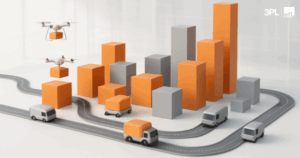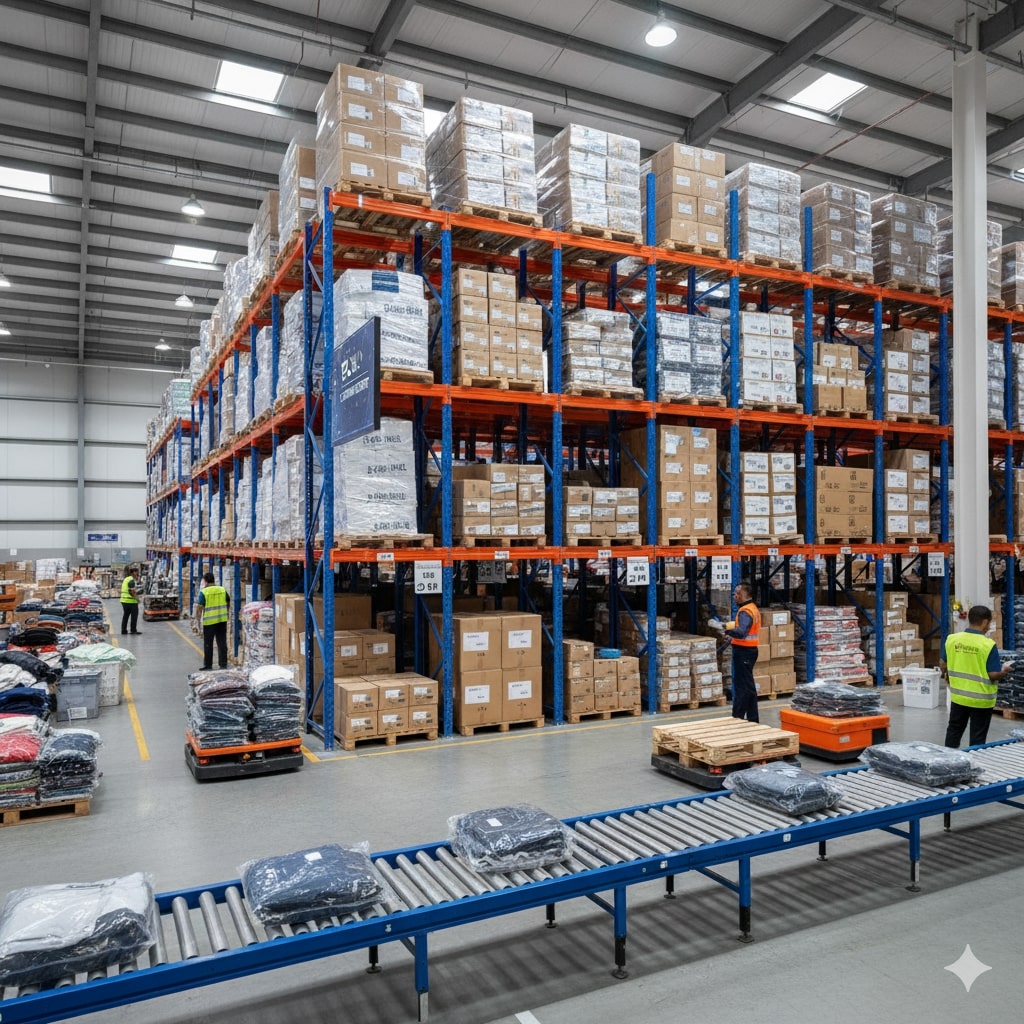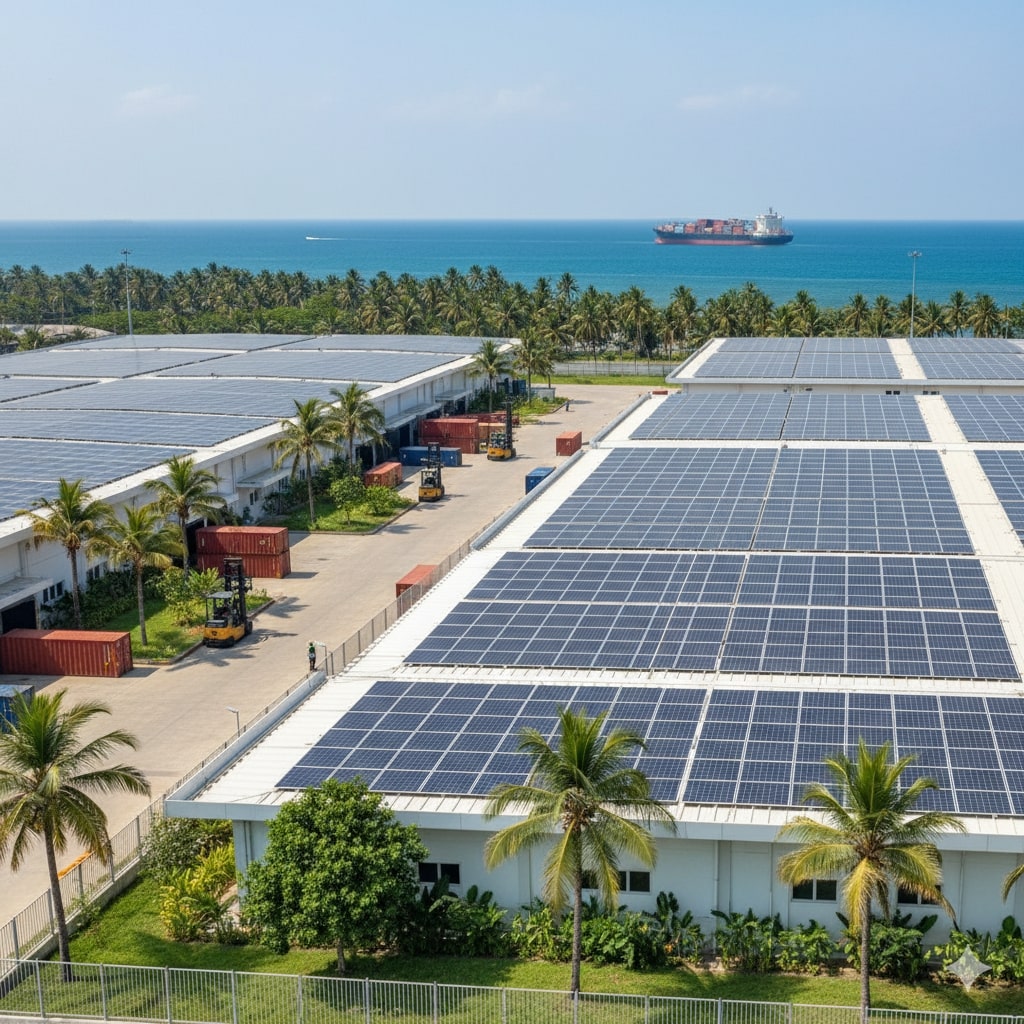- EFL 3PL
- 3PL Malaysia
Urban delivery has gotten weird lately. Not bad, weird, just different from what anyone expected five years ago. Order something at 9 PM and it shows up 10 minutes later. Sometimes faster than the ambulance. There’s obviously serious infrastructure behind this speed, but most people don’t realize how dramatically the system changed to make it work, a system we refer to as micro-fulfillment centers
The old model – massive warehouses on city edges, trucks hauling stuff through traffic for hours – hit a wall when everyone decided they wanted everything immediately. Amazon probably deserves blame for setting expectations so high, though plenty of other companies jumped on the bandwagon once they saw the market response.
What emerged is something called micro-fulfillment centers, though that term makes them sound more boring than they are. These facilities represent probably the biggest shift in urban logistics since the invention of trucks. That might be overselling it, but not by much.
What These Actually Do
Most micro-fulfillment centers occupy spaces between 3,000-10,000 square feet. Compare that to traditional distribution centers sprawling across areas the size of several football fields. But the real difference isn’t size – it’s location strategy. These pop up in unexpected places: former abandoned stores, old restaurant spaces, even empty mall sections.
The inventory approach flips conventional wisdom completely. Traditional warehouses stock a maximum variety, assuming more options equal more sales. Micro-fulfillment centers do the opposite – they obsess over identifying specific products that people in particular neighborhoods buy repeatedly. This requires sophisticated data analysis that would’ve seemed like science fiction to retail managers twenty years ago.
Indian companies pushed this concept further than anyone else. Swiggy Instamart operates “dark stores” – warehouses purely for delivery, with no walk-in customers ever. These positions are strategically near residential clusters, particularly where grocery shopping traditionally meant crowded markets, limited parking, or both.
Different companies take completely different approaches, though. Zepto decided to optimize purely for speed, promising 10-minute deliveries and building everything around that commitment. They’ve established over 300 micro-distribution centers across 12 cities and raised around $400 million to fund expansion. That’s serious money betting on fundamental behavioral shifts.
Automation varies dramatically between operators. Some facilities rely on human workers with basic tech support. Others incorporate robotic picking systems that navigate vertical storage arrays with precision humans can’t match consistently.
Regional Variations
Malaysia’s logistics sector shows how these concepts adapt to different markets. DHL’s fulfillment network incorporates principles of micro-fulfillment centers while serving domestic and cross-border e-commerce. The approach recognizes Malaysia’s regional trading hub position, which creates requirements that pure domestic quick commerce doesn’t address.
Sri Lanka represents interesting potential versus reality. Colombo’s dense population and the country’s compact geography create ideal conditions theoretically. Distances are manageable, population density is high, and mobile commerce adoption is growing. But economic factors and infrastructure limitations slow implementation. Market conditions exist, but capital requirements remain challenging given recent foreign exchange constraints.
Blinkit’s success demonstrates how economics work when executed properly. Their average order value of ₹685 exceeds competitors’, suggesting they’ve found ways to encourage larger purchases despite convenience-focused markets. This balance between order frequency and size becomes crucial for making numbers work, especially given high urban real estate costs.
Operational Complications
Urban real estate costs create obvious challenges. Prime locations near high-density residential areas command premium rents that quickly undermine economics. Some operators experiment with creative lease arrangements, including revenue-sharing agreements that turn property owners into business partners. These work but require landlords’ understanding of operational requirements and accepting variable income.
Regulatory environments create complexity that varies dramatically between cities and countries. Zoning classifications struggle to accommodate operations, blurring boundaries between retail, warehousing, and logistics. Micro-fulfillment centers generate delivery vehicle traffic that residential communities weren’t expecting. Some operate 24 hours, creating noise issues requiring careful community relations.

Inventory management becomes exponentially complex with limited storage. Traditional warehouses can overstock items or carry slow-moving inventory without a significant operational impact. Micro-fulfillment centers must turn inventory rapidly while maintaining variety, meeting customer expectations. Getting this balance wrong affects satisfaction and financial performance quickly.
Staffing presents challenges beyond labor costs at these micro-fulfillment centers. Technical systems require specialized maintenance knowledge. These aren’t traditional warehouse jobs, handling primarily physical tasks. Modern facilities need people working with robotic systems, interpreting inventory software data, and coordinating multiple technology platforms simultaneously. Specialized knowledge commands premium wages in urban markets.
Technology Integration
Technology stacks powering operations continue evolving, though implementations vary dramatically based on local conditions, available capital, and operator priorities. Some facilities rely on human workers with basic technology – conveyor systems, simple inventory tracking, and standard warehouse management. Others incorporate sophisticated robotics, handling the majority of fulfillment tasks with minimal human intervention.
Integration with existing supply chains proves more complex than operators anticipate. Micro-fulfillment centers coordinate with upstream suppliers unaccustomed to frequent, smaller deliveries that these operations require. Traditional suppliers prefer larger, less frequent orders matching their operational rhythms. This mismatch creates inventory challenges affecting customer service.
Demand forecasting algorithms determining inventory levels incorporate data sources that traditional retail rarely considers. Weather forecasts influence certain product sales predictably. Local events create temporary demand spikes. Social media sentiment influences purchasing patterns, particularly for lifestyle or trending products.
Market Evolution
The competitive landscape shifts as different company types attempt to capture market share. Traditional retailers incorporate micro-fulfillment capabilities into existing stores, creating hybrid models serving walk-in customers and delivery through shared inventory. Pure-play e-commerce builds dedicated networks optimized for rapid delivery. Logistics specialists offer services to multiple retailers, creating shared infrastructure that smaller operators can access without building facilities.
Consumer behavior patterns suggest that once customers experience ultra-fast delivery, expectations permanently shift upward. This creates competitive dynamics where entry barriers rise as service standards become demanding. Later market entrants face meeting service levels of early movers, often without operational experience or customer loyalty, and first movers have developed
Looking ahead, micro-fulfillment center integration into urban infrastructure seems likely to accelerate. Cities dealing with traffic congestion, environmental concerns, and changing retail patterns increasingly view these as solutions to multiple urban challenges.












